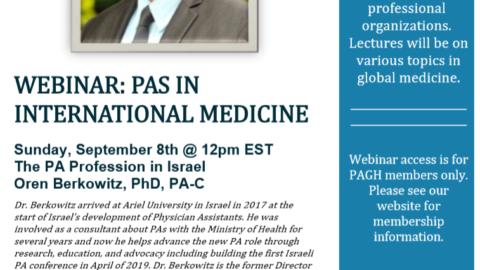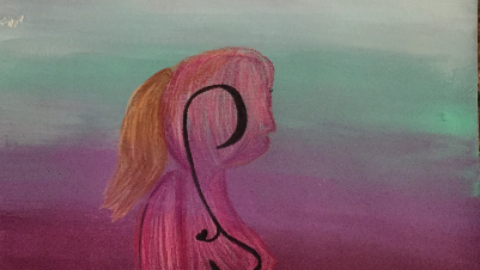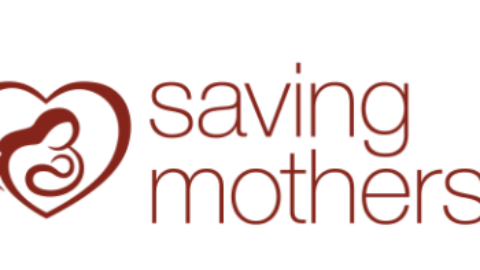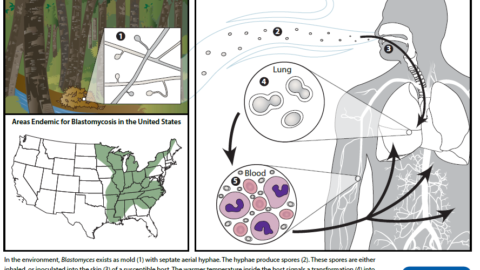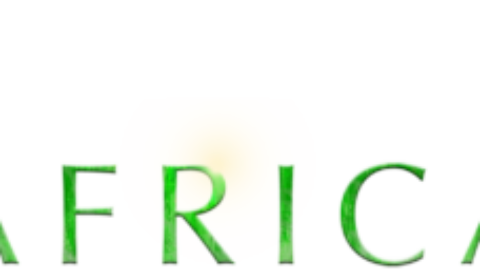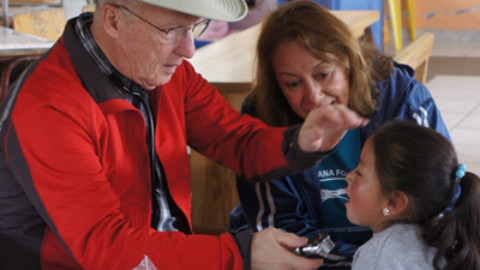
Can you please come quickly?
My brother has just returned from the hospital and is having difficulty breathing!” Night had already fallen in the town of Ranquitte, Haiti, and I was preparing for bed when I overheard one of our translators speak those words. Minutes later I found myself sitting shotgun in an old Toyota 4Runner filled to the brim with five Haitian men, another PA student, an ER nurse, and an ER PA.
 Without any additional information about our patient, we sped down the overgrown two-track in the pitch black for what seemed like hours until suddenly we stopped. “Are we here?” No, it was a flat tire. The last quarter mile was on foot.
Without any additional information about our patient, we sped down the overgrown two-track in the pitch black for what seemed like hours until suddenly we stopped. “Are we here?” No, it was a flat tire. The last quarter mile was on foot.
We arrived to a surreal scene. The small concrete house with corrugated tin roof and dirt floors was overflowing with people. Friends and family of the sick man parted like the Red Sea as we walked into the candlelit bedroom. There lay a middle- age man in respiratory distress. He was exceptionally thin, even by rural Haitian standards.
The history and physical was cut short when we learned he was diagnosed at the hospital with Tuberculosis and discharged with nothing more than Mucinex. Then, as if on cue, he expectorated bloody sputum into his trembling hands. We learned the next morning that he passed away just hours after our visit.
This gentleman was just one of many memorable patients from a recent mission trip to Haiti. I am currently a second year PA student at Wake Forest University and was fortunate enough to spend two weeks this September volunteering with Peacework Medical as part of a rural health elective rotation. I was joined by one other classmate, two faculty members, and a diverse team of doctors, PAs, nurses, and EMTs from across the country.
We spent nine days in Ranquitte, a small, mountainous town approximately five hours north of Port-au-Prince. Including the surrounding area, the Ranquitte region has approximately 20,000 residents. There are a few small, nurse-run clinics servicing the area, but as evidenced by the preceding story, good healthcare is hard to come by, even at the larger hospitals.
Peacework Medical
Peacework Medical has been involved in this region of Haiti since the earthquake in 2010. The organization, led by Pam Burwell, an emergency PA and fellow Wake Forest graduate, began by constructing clean water tanks and played a huge role in ending the cholera epidemic in this area. More recently, Peacework has constructed a new clinic to be staffed by a Haitian-trained nurse practitioner. At the time of our visit, the clinic was not yet functional and was too small for our operation. Instead, we set up shop in a local church.
Our days began before sunrise with the crowing of roosters echoing through town. A handful of us would strap on headlamps and head out for a morning hike. The steep, lush hillsides were tricky to navigate, but it was well worth it to reach the summit just as the sun was rising. To the east we could see the mountains of the Dominican Republic, and below us to the west, was the tiny town of Ranquitte waking up for another day.
 Back at the guesthouse we enjoyed another delicious breakfast of porridge, spaghetti, or rice and beans then made our way to the church to begin the workday. Each morning we waded through a mob of people elbowing their way to the front of the “line” to be the first seen. It was shocking to me to see the characteristic selfishness of Haitian culture evident here. There was no respect for one another such as allowing a sick old lady to be seen first. Rather, it was every man, woman, and child for him or herself.
Back at the guesthouse we enjoyed another delicious breakfast of porridge, spaghetti, or rice and beans then made our way to the church to begin the workday. Each morning we waded through a mob of people elbowing their way to the front of the “line” to be the first seen. It was shocking to me to see the characteristic selfishness of Haitian culture evident here. There was no respect for one another such as allowing a sick old lady to be seen first. Rather, it was every man, woman, and child for him or herself.
Between the six providers and two students, we saw roughly 300 patients daily. Despite the heavy patient load, our workdays were relatively short thanks to the support of the Haitian locals employed by Peacework to help facilitate our presence, an efficient system for handling such high volumes of patients, and of course the absence of charting.
Complaints were typical of those found in many primary care visits in the United States: headaches, back pain, indigestion, hypertension, UTIs, STIs, etc. Occasionally we would see some more interesting cases like a wound from a Botfly or undiagnosed congenital cardiac defects. History taking was the greatest challenge of these visits. Creole is the official language of the country and is very closely related to French. Unfortunately, none of us spoke either, and despite learning a bit in school, most Haitians did not know any more English than the phrase, “Blanco, give me one dollar.” We tried to get around this by using professional translators hired by Peacework. These men were very smart, helpful, and excited to be a part of our trip. Even so, the language barrier was often insurmountable.
Lost in Translation
Haitians have a very difficult time localizing pain, describing pain, and constructing a cohesive timeline of events in their own language, let alone when trying to translate to English. At first this was incredibly frustrating, but I soon accepted it and began to focus on a very detailed physical exam. Without a solid history and the support of any diagnostic tools, the physical exam became the key to successfully evaluating each patient. As a student, I loved the chance to hone my skills.
Our evenings in Ranquitte were usually mellow. After an early dinner we would occasionally have a house call to make, but more often we spent our time reading, playing cards, walking around town, exploring the trails in the surrounding hills, and playing with the local children. If the afternoon showers stopped in time, the sunsets were usually spectacular from the roof of the guesthouse.
This was not my first mission trip, but it was my first mission trip volunteering as a medical provider. This was extremely meaningful for me. The opportunity to us my own knowledge, skills, and resources to help the poorest of the poor is one of the fundamental reasons I chose to pursue a career in medicine. It was wonderfully fulfilling to see this come to fruition, and it makes me excited to think about what my future holds. The chance to work alongside so many smart, dedicated PAs and doctors was also a tremendous learning experience, and I am grateful to everyone that made this trip possible, especially PAGH.
[text_box title="About the Author" icon=""]This article was by Tony Steier, PA-S, Wake Forest Physician Assistant Program and was featured in the November 2014 issue of the Nexus newsletter.You can learn more about Peacework Medical and even apply as a medical volunteer by visiting their website. [/text_box]

